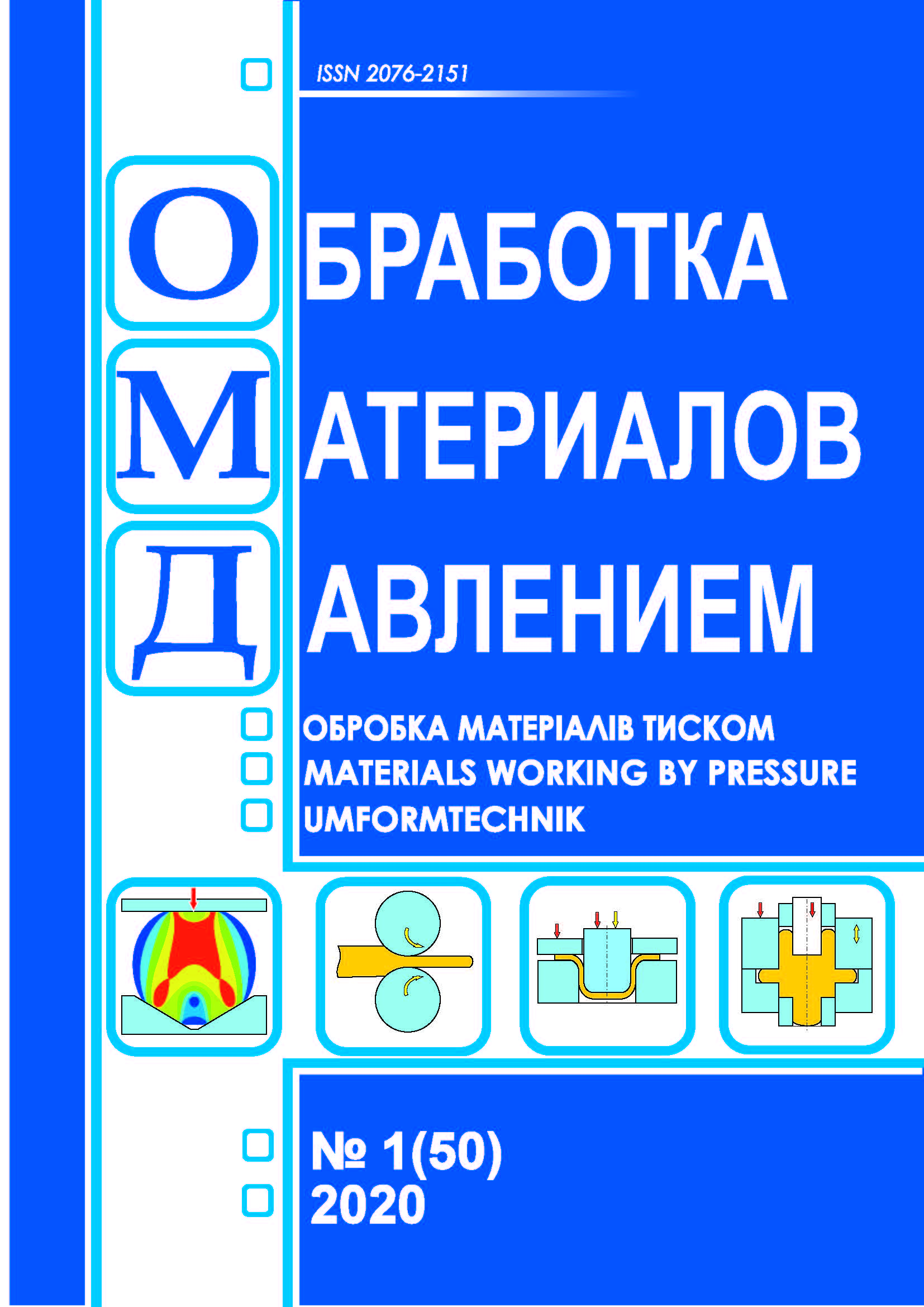Determination of power parameters of the extrusion process of cylindrical parts using square workpieces
DOI:
https://doi.org/10.37142/2076-2151/2020-1(50)130Keywords:
extrusion, low workpiece, upsetting, upper bound method, vortical flow, festoon, thin-walled tube.Abstract
Krotenko G. A., Levchenko V. N., Tahan L. V. Determination of power parameters of the extrusion process of cylindrical parts using square workpieces. Material working by pressure. 2020. № 1 (50). Р. 130-135.
The up to date methods of relatively low (short) round in terms workpieces producing for extrusion of cylindrical parts are analyzed. It is shown that cutting from sheet material, even with the use of multi-row one, does not allow producing such workpieces with high material utilization factor. Alternative methods, such as shear cutting in special dies and rolling out, do not provide the quality of low workpieces or are inefficient ones. It is proposed to obtain relatively low round workpieces by upsetting square ones, for which the value of material utilization factor the approaches 100 %. There are given the results of theoretical analysis of upsetting of square workpiece in cylindrical die, at which deformation describes by vortical metal flow. The mathematical model of the process was created using three-dimensional vortex velocity field based on the upper bound method. The calculation results are compared with experimental data. The dependences of the unit forces from the non-filling for the upsetting of a square workpiece, as well as for the stationary stage of extrusion of workpieces of cup type with wall thickness of 0.50 mm and 0.25 mm were obtained. The proposed method of theoretical analysis can be used to determine the wall thickness at which the festoon will not be obstacle to the manufacture of thin-walled parts such as tubes. The technological process of extrusion round detail (thin-walled tube) from square workpiece is offered. The applying of the new technology for extrusion of tubes from square workpieces makes it possible to increase the material utilization factor from 0.67 to 0.98.

